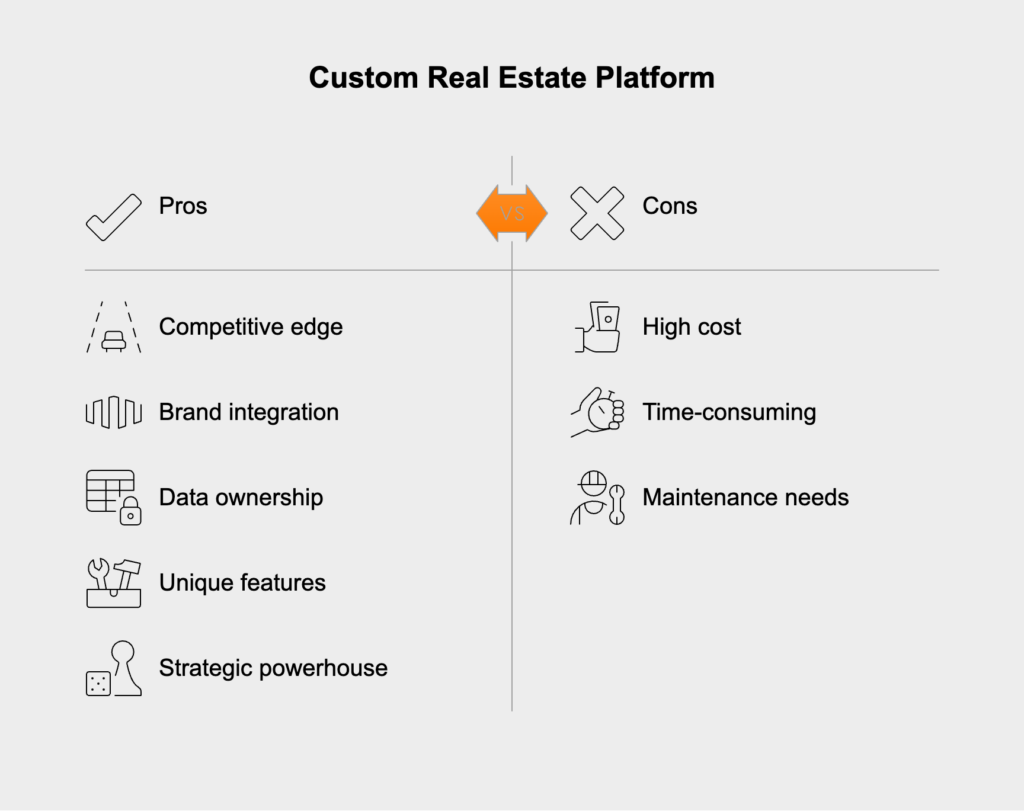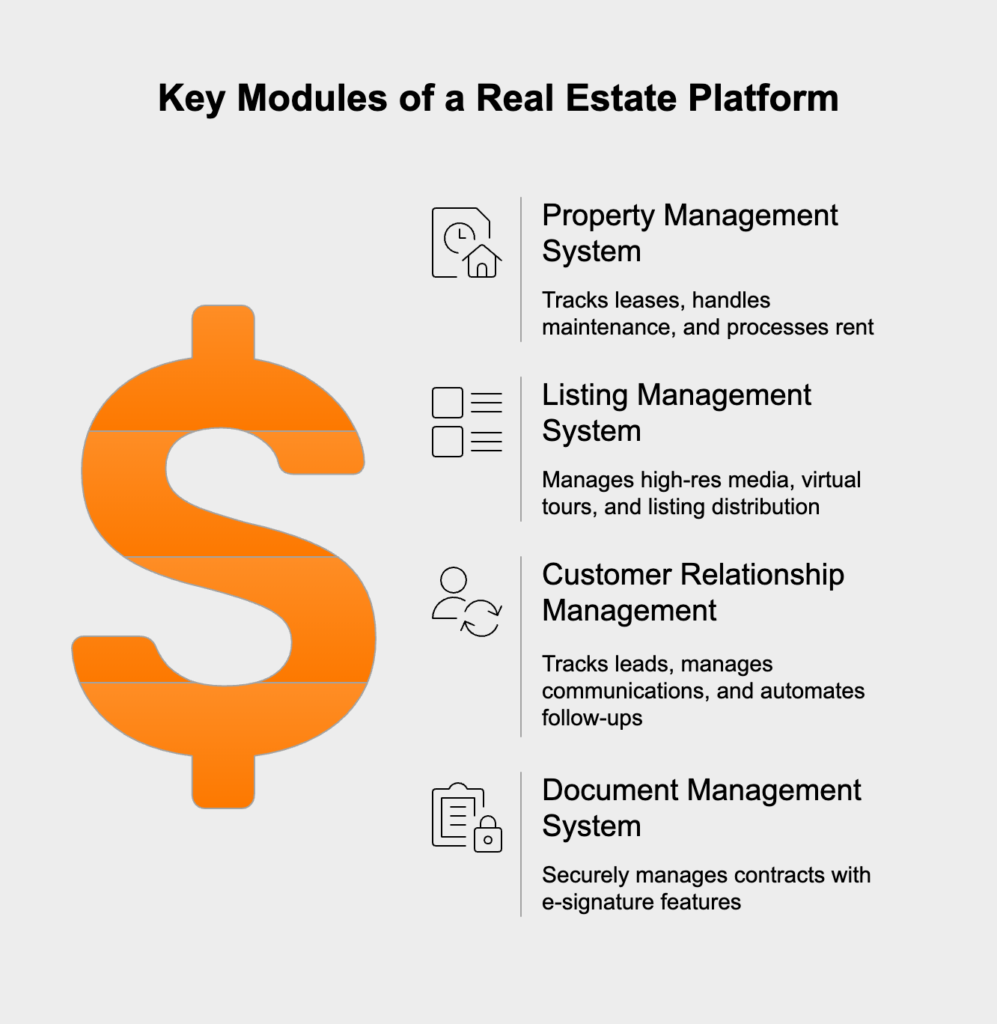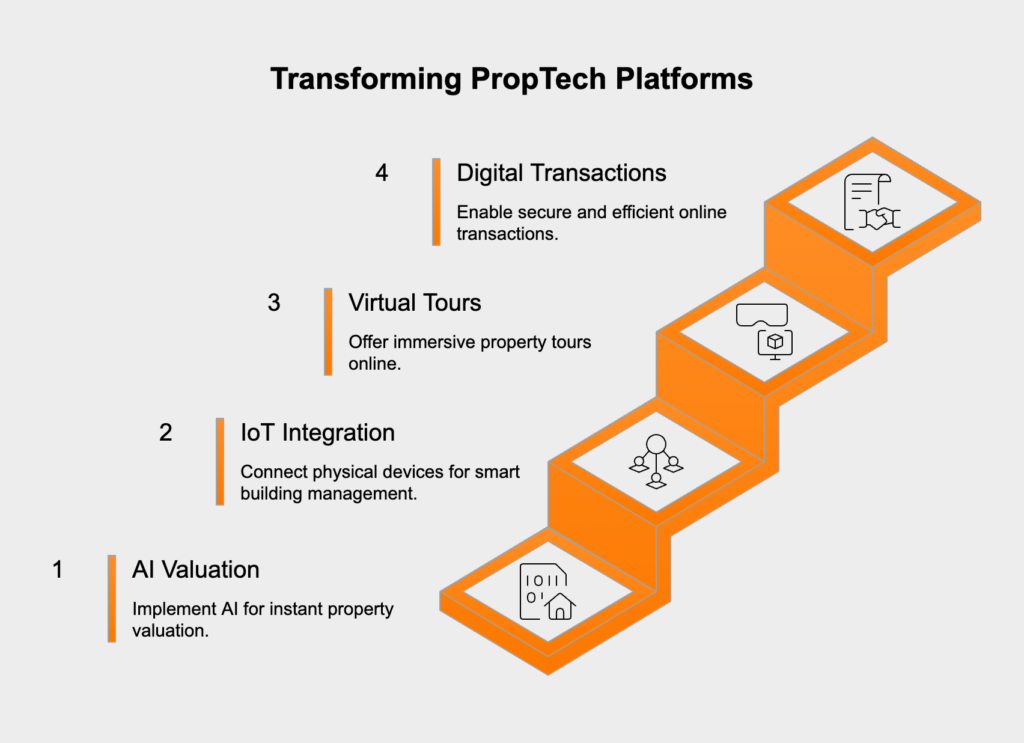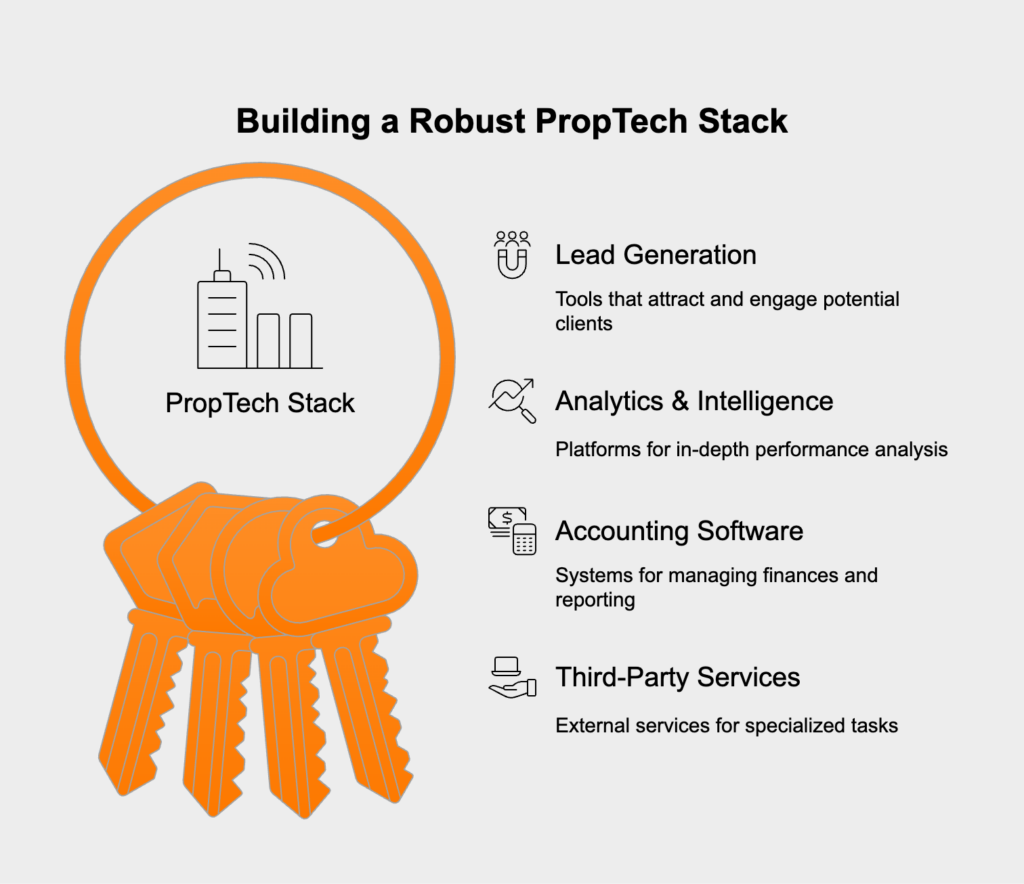Why is a Mobile-first Approach Crucial for Real Estate Websites?
- July 14
- 10 min

Choosing a custom real estate platform means breaking free from the one-size-fits-all constraints of off-the-shelf software. Sure, pre-built tools get you started fast, but a platform built just for you delivers a real competitive edge. It’s designed to fit your specific workflows, your clients, and your place in the market. With a custom build, you can weave your brand into every detail, maintain full ownership of your data, and develop unique features that solve your exact problems. Your technology stops being just another tool and becomes a strategic powerhouse, boosting efficiency in property management, simplifying customer interaction, and crafting a standout property listing experience.

Before a single line of code is written, a successful custom platform starts with a solid strategic blueprint. This planning stage is all about making sure the final product actually lines up with your business goals, what your users need, and the realities of the market. It’s how you manage risk, keep costs in check, and map out a clear journey from idea to launch.
First, you need to turn big ambitions into clear, measurable goals. Is the main objective to cut property management overhead by 30%, boost lead conversion from listings by 15%, or lift tenant satisfaction scores? At the same time, you have to map out what every type of user actually needs. This includes property managers who need automated maintenance workflows, agents who want an intuitive CRM, tenants looking for a simple payment portal, and owners who demand transparent financial reports. When these goals and user journeys are clearly defined, every feature built will have a clear purpose and deliver real value.
A deep dive into the current market is crucial. This means checking out the platforms your competitors are using to get a baseline for standard features and user expectations. But the real goal isn’t just to copy them—it’s to innovate. Your analysis should zero in on finding service gaps, uncovering user frustrations with existing tools, and spotting new PropTech insights that haven’t been widely adopted yet. This is where you’ll find opportunities to build a platform that offers something genuinely better, more efficient, or more connected.
Once you’ve defined your goals and opportunities, it’s time to build a detailed project roadmap. Using an agile development approach works incredibly well here, as it breaks the project down into manageable stages, or “sprints,” each with its own clear deliverables. This roadmap should lay out the project timeline, assign resources, and establish key milestones for design, development, testing, and the final launch. A well-made plan keeps every stakeholder in the loop and gives you the flexibility to adjust based on feedback as the project moves forward.
A platform’s architecture is its technical backbone; it dictates how well it performs, scales, and stays secure. Smart architectural design is what allows your platform to grow alongside your business and embrace new tech without needing a total rebuild. A powerful real estate platform is usually constructed from a few key, interconnected modules:

These modules need to communicate flawlessly to create a single, reliable source of information for your whole operation. At the same time, the platform must be built for growth. Scalability means it can handle more users, properties, and deals without slowing down. This is achieved with smart choices like cloud infrastructure (think AWS or Azure) for flexible resources and a microservices approach, which builds the platform from smaller, independent parts. This makes the whole system easier to scale and update down the road.
Security can’t be a feature you tack on at the end—it has to be baked into the architecture from the very start. Protecting your platform’s integrity and sensitive user data requires multiple layers of defense. Essential measures include everything from end-to-end data encryption and secure login methods to regular security audits and full compliance with privacy laws like GDPR or CCPA. Ultimately, a secure platform is non-negotiable for earning and keeping the trust of your clients, tenants, and partners.
Modern PropTech is what transforms a custom platform from just a functional tool into an asset that leads the market. Integrating these technologies helps automate tricky processes, delivers insights backed by data, and creates a much better experience for your users.
Artificial Intelligence (AI) and machine learning are game-changers for real estate analytics. By building in Automated Valuation Models (AVMs), your platform can offer instant, data-backed property value estimates. These models crunch huge datasets of past sales, market trends, and property details to generate objective valuations with less human bias. AI can also track user behavior on your site to score leads, flagging which potential buyers or tenants are most interested so your sales team can focus their energy where it counts.
The Internet of Things (IoT) links physical devices in your properties directly to your digital platform, opening the door for smart building management that massively boosts efficiency. For instance, IoT sensors can monitor HVAC systems and send out predictive maintenance alerts before a system actually breaks, saving money and preventing downtime. Smart locks can provide temporary access for maintenance crews or property showings, with every entry logged automatically in the platform for better security and oversight.
Giving users an immersive and convenient experience is essential for winning and keeping clients. High-definition virtual tours and 3D walkthroughs let potential buyers or renters check out a property from anywhere, saving everyone time. When you connect these listings to data APIs, you can provide extra context like neighborhood stats or transit scores. A basic data structure for a property listing API might look like this:
{ "propertyId": "12345-ABC", "address": "123 Main Street, Anytown, USA", "price": 450000, "currency": "USD", "features": { "bedrooms": 3, "bathrooms": 2.5, "sqft": 1800 }, "media": { "images": ["url1.jpg", "url2.jpg"], "virtualTourUrl": "https://tour.example.com/12345" }, "status": "active"}
On top of that, building in secure digital transaction and e-signature tools creates a completely online process from the initial offer to the final closing, which is exactly the kind of speed and convenience modern customers expect.

This phase is where the strategic plan and architectural blueprint become a real, working product. It all comes down to a disciplined development cycle, thorough testing, and a carefully managed launch strategy.
Trying to build every feature you can think of all at once is a recipe for disaster. A much smarter approach is to develop a Minimum Viable Product (MVP). An MVP is a lean version of your platform that contains only the absolute essential features needed to solve a core user problem. This gets your product to market faster, lets you collect feedback from actual users, and helps you confirm your main ideas before you spend big on secondary features. All future development can then be guided by that invaluable user data.
Intense testing is absolutely critical. The Quality Assurance (QA) process has several stages, from functionality testing to hunt down bugs and performance testing to make sure the platform is fast, to security testing to find any weak spots. The last and most important stage is User Acceptance Testing (UAT). This is where your actual end-users—property managers, agents, and a few clients—test the platform in real-world situations. Their feedback is gold for making those final tweaks to usability and workflow just before the official launch.
A modern real estate platform isn’t just one giant application. It’s the central hub of a “PropTech stack”—a handpicked group of integrated tools and software that work together to manage the entire real estate lifecycle. Building your stack means choosing top-tier solutions that connect smoothly to your custom platform through APIs (Application Programming Interfaces). A good stack is modular, so you can easily add, swap, or upgrade different parts as your business and the technology itself change over time. Key parts of a solid PropTech stack often include:

Launching the platform isn’t the finish line; it’s the start of its life. For long-term success, you have to commit to continuous maintenance and evolution. This means keeping a close eye on platform performance, server health, and security to catch problems before they start. A huge part of this is creating a feedback loop with your users to collect their suggestions for improvements and ideas for new features. This user feedback, combined with data on how the platform is being used, should drive the roadmap for future updates. Regular enhancements and adding new PropTech innovations will keep your platform relevant, competitive, and delivering the most value possible to your business.
